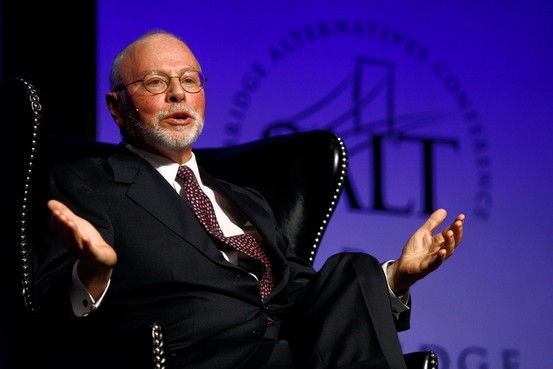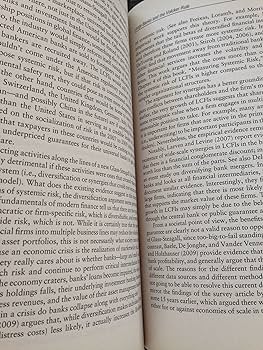Introduction
The New York Stock Exchange (NYSE) stands as an iconic symbol of American financial power and is often regarded as the heart of Wall Street. Beyond its significant role in American finance, the NYSE wields immense influence on global financial markets, setting the tone for international trade, investment, and economic stability. This article explores how the NYSE, situated in the financial epicenter of New York City, shapes and impacts global finance.
The New York Stock Exchange (NYSE) is not merely a financial institution; it is a living testament to the enduring influence of American financial power and the beating heart of Wall Street. However, its significance extends far beyond the borders of the United States. The NYSE holds a unique position in the global financial landscape, setting the tone for international trade, investment, and economic stability.
At its core, the NYSE is a marketplace where shares of some of the world’s most influential companies are bought and sold. It represents a microcosm of the global economy, with companies from various sectors and industries listed, reflecting the diversity and dynamism of American business. The exchange’s iconic trading floor, with its bustling activity and iconic bell-ringing ceremonies, symbolizes the pulse of global commerce.
One of the NYSE’s critical roles is its ability to mobilize capital. It provides a platform for companies to raise funds through initial public offerings (IPOs) and subsequent stock offerings. This capital injection fuels business expansion, innovation, and job creation, not only within the United States but also in companies around the world that seek to access global financial markets through the NYSE.
The NYSE’s influence radiates globally, impacting investment decisions and economic stability. It sets the tone for global financial markets, with its daily opening and closing bell ceremonies serving as bellwethers for investor sentiment. The NYSE’s performance influences the behavior of financial markets in Asia, Europe, and beyond, shaping the trajectories of investments, currencies, and commodities.
Moreover, the NYSE plays a pivotal role in reinforcing the perception of the United States as a global financial powerhouse. Its presence in the financial epicenter of New York City, surrounded by some of the world’s leading financial institutions, reinforces the city’s status as a global financial hub. This status, in turn, bolsters the U.S. dollar’s position as the world’s primary reserve currency and strengthens American economic influence.
The NYSE’s resilience and adaptability have been tested through various economic crises and technological advancements. It has embraced digital trading platforms and electronic communication networks while preserving the essence of its iconic trading floor. This ability to evolve with the times has enabled the NYSE to remain at the forefront of global finance.
Despite its monumental influence, the NYSE has faced challenges, including issues of market volatility, regulatory scrutiny, and the need for continuous technological innovation. Maintaining market integrity and investor confidence is an ongoing commitment.
In conclusion, the New York Stock Exchange, nestled in the financial epicenter of New York City, is more than just a stock exchange; it’s a symbol of American financial prowess. Its impact extends globally, shaping international trade, investment decisions, and economic stability. As a driving force in the world of finance, the NYSE reflects the dynamism and resilience of American capitalism while serving as a beacon that guides the course of global financial markets.
For additional details, consider exploring the related content available here The History of NYSE
The NYSE was founded in 1792 when 24 stockbrokers signed the Buttonwood Agreement, establishing rules for trading stocks and bonds under a buttonwood tree on Wall Street. This modest beginning laid the foundation for what would become the world’s largest and most prestigious stock exchange.
The birth of the New York Stock Exchange (NYSE) in 1792, marked by the signing of the Buttonwood Agreement by 24 stockbrokers, was a seminal moment in the history of global finance. This humble beginning under the shade of a buttonwood tree on Wall Street set in motion a series of events that would transform not only the financial landscape of the United States but also the international economic order. It was a small gathering with grand aspirations, and from this unassuming origin, the NYSE emerged as the world’s largest and most prestigious stock exchange.
The Buttonwood Agreement, while simple in form, laid down the foundational rules and principles that would govern the trading of stocks and bonds. It established a commitment to transparency, fairness, and adherence to established rules—a commitment that remains central to the functioning of the NYSE to this day. Under the terms of the agreement, brokers pledged to deal only with each other, thereby creating a network of trust and reliability in the nascent American financial system.
The location chosen for this gathering, Wall Street, would soon become synonymous with financial power and influence. Over the years, the narrow street in Lower Manhattan would witness the construction of iconic financial institutions, such as the Federal Hall National Memorial and the New York Stock Exchange building itself, further solidifying its status as the epicenter of American finance.
As the American economy grew and evolved, so did the NYSE. It played a pivotal role in facilitating the financing of the nation’s ambitious infrastructure projects, including the construction of railways, bridges, and factories during the 19th century. The NYSE’s innovative practices, such as the introduction of standardized stock tickers and the adoption of telegraph communication, propelled it to the forefront of global financial markets.
The Great Depression of the 1930s presented the NYSE with one of its most significant challenges. However, it responded by implementing reforms and regulations that aimed to restore confidence in the market. These changes, including the establishment of the Securities and Exchange Commission (SEC), transformed the NYSE into a more regulated and transparent institution.
The NYSE continued to adapt and expand in the latter half of the 20th century. Technological innovations, such as electronic trading, marked a new era for the exchange, enabling faster and more efficient transactions. The NYSE also embraced globalization, welcoming international companies to list their shares, further enhancing its global reach and prestige.
Today, the New York Stock Exchange stands as a symbol of economic might and financial stability. It serves as a primary destination for companies seeking to raise capital through public offerings and provides a platform for investors to buy and sell securities. Its trading floor, while no longer filled with shouting traders, remains an iconic symbol of global finance.
The legacy of the Buttonwood Agreement endures in the NYSE’s commitment to the principles of trust, transparency, and integrity in the financial markets. From its modest beginnings under a tree to its current status as the world’s largest stock exchange, the NYSE’s journey is a testament to the enduring power of innovation, entrepreneurship, and a commitment to sound financial practices in shaping the course of history.
To delve further into this matter, we encourage you to check out the additional resources provided here: NYSE: The New York Stock Exchange

New York City and Wall Street have long been synonymous with the global financial industry. The NYSE serves as a primary hub for trading equities and plays a pivotal role in attracting investors, corporations, and financial institutions from around the world. The presence of the NYSE has transformed Lower Manhattan into a bustling financial district, home to numerous banks, investment firms, and financial service providers.
New York City, often referred to as the financial capital of the world, boasts an enduring and symbiotic relationship with Wall Street and the New York Stock Exchange (NYSE). This iconic financial district has become synonymous with the global financial industry, bearing witness to the ebb and flow of markets and fortunes for over a century. The NYSE, in particular, stands as a towering pillar of this financial landscape, serving not only as a primary hub for trading equities but also as a beacon that draws investors, corporations, and financial institutions from every corner of the globe. The profound presence of the NYSE has not only shaped the financial landscape of Lower Manhattan but has also catalyzed its transformation into a bustling and dynamic financial district, housing an array of banks, investment firms, and financial service providers.
A Hub of Global Finance: The NYSE’s significance in the global financial arena cannot be overstated. Its storied history, dating back to 1792, has seen it weather numerous economic storms and technological revolutions. Today, it remains a linchpin of the world’s financial markets, providing a platform for the trading of some of the largest and most influential companies’ equities. The NYSE’s global reach attracts investors and traders from every corner of the world, contributing to its status as a symbol of financial power and prestige.
Attracting Global Capital: The NYSE’s prominence extends beyond the trading floor. It serves as a magnet for corporations seeking to raise capital through initial public offerings (IPOs) and subsequent equity offerings. The allure of being listed on the NYSE is not confined to American companies; it draws corporations from abroad as well. Being part of this prestigious exchange enhances a company’s visibility and credibility on the global stage, making it an attractive destination for capital-seeking enterprises worldwide.
A Transformative Influence: The presence of the NYSE has profoundly transformed Lower Manhattan, giving rise to what is now a bustling financial district. Skyscrapers adorned with the logos of major financial institutions dominate the skyline, symbolizing the district’s role as the heart of global finance. The proximity of these institutions fosters collaboration, competition, and innovation within the financial services sector, solidifying New York’s status as a financial epicenter.
Job Creation and Economic Impact: Wall Street and the NYSE are formidable economic engines, generating employment opportunities and driving economic growth in the region. The financial district’s workforce is a melting pot of talent, attracting professionals from diverse backgrounds and expertise. These individuals contribute not only to the growth of financial institutions but also to the broader economy through their spending, real estate investments, and philanthropic endeavors.
Challenges and Evolution: The financial landscape is not static, and Wall Street faces its share of challenges. Technological advancements, regulatory changes, and the evolving nature of finance have prompted continual adaptation and innovation. The district has evolved to accommodate the changing needs of the industry, embracing fintech, sustainable finance, and digital transformation as essential components of its future.
In conclusion, New York City and Wall Street, with the NYSE at their core, remain synonymous with the global financial industry. The NYSE’s role as a financial epicenter and a beacon for investors and corporations worldwide has helped shape Lower Manhattan into a thriving financial district. As the financial landscape continues to evolve, this enduring relationship between the NYSE, Wall Street, and New York City will undoubtedly persist, marking a continued legacy of financial prowess, innovation, and influence on a global scale.
Should you desire more in-depth information, it’s available for your perusal on this page: Why Wall Street Is a Key Player in the World’s Economy

The NYSE is home to some of the world’s largest and most renowned companies, spanning various sectors, including technology, finance, healthcare, and energy. Many multinational corporations choose to list their shares on the NYSE to gain access to global capital markets and enhance their visibility among international investors.
The New York Stock Exchange (NYSE) stands as a global financial hub, and its significance extends far beyond being a mere trading floor. It serves as the prestigious home to an illustrious roster of the world’s largest and most renowned companies, each representing a diverse spectrum of industries. These industries encompass not only technology, finance, healthcare, and energy but also countless others, showcasing the NYSE’s exceptional capacity to accommodate a wide array of business sectors.
Technology Pioneers: The NYSE is a magnet for technology giants that have revolutionized the digital landscape. Companies like Apple, Microsoft, and Amazon have chosen to list on the NYSE, harnessing its immense liquidity and global reach to fund their innovations and expansion.
Financial Powerhouses: Some of the world’s most influential financial institutions, including JPMorgan Chase, Goldman Sachs, and Berkshire Hathaway, are listed on the NYSE. Their presence underscores the NYSE’s pivotal role in the global financial system.
Healthcare Innovators: Leading pharmaceutical and healthcare companies, such as Pfizer, Johnson & Johnson, and Moderna, find a prominent place on the NYSE. Their listing facilitates access to capital for research and development, ultimately benefiting global health.
Energy Leaders: Energy giants like ExxonMobil and Chevron are part of the NYSE’s esteemed roster. These companies play an instrumental role in shaping global energy policies and supply chains.
Multinational Appeal: The NYSE’s appeal is not confined to American corporations; it extends internationally. Many multinational companies from around the world choose to list their shares on the NYSE to tap into global capital markets and enhance their visibility among a diverse and discerning investor base.
Global Capital Access: Listing on the NYSE provides companies with unparalleled access to global capital. The exchange’s liquidity and international investor base make it an attractive destination for companies seeking to raise funds for expansion, acquisitions, and innovation.
Visibility and Credibility: The NYSE’s long-standing reputation for transparency and regulatory rigor enhances the credibility of listed companies. It serves as a symbol of trust for investors worldwide.
Market Benchmark: The NYSE’s performance is closely watched by investors and analysts worldwide. It sets a benchmark for global market sentiment and often reflects broader economic trends and geopolitical developments.
Market Resilience: The NYSE has weathered numerous economic challenges and crises over its storied history. Its resilience and adaptability have made it a symbol of stability in uncertain times.
Technological Advancements: In the digital age, the NYSE has embraced technological advancements to enhance trading efficiency and accessibility. These innovations ensure that it remains at the forefront of global financial markets.
In conclusion, the NYSE’s status as a preeminent global exchange is rooted in its ability to attract and accommodate companies from diverse industries and regions. By providing access to capital, enhancing visibility, and offering a platform for growth and innovation, the NYSE continues to play a pivotal role in shaping the global business landscape and driving economic progress on a global scale.
For additional details, consider exploring the related content available here The hidden links between slavery and Wall Street – BBC News

Investors worldwide look to the NYSE for opportunities to diversify their portfolios. The exchange’s reputation for transparency, liquidity, and regulatory oversight makes it an attractive destination for both individual and institutional investors seeking exposure to the American market.
Investors worldwide view the NYSE as a beacon of financial stability and opportunity. Its reputation for transparency, liquidity, and stringent regulatory oversight has solidified its status as a top choice for those looking to diversify their portfolios and gain exposure to the American market. Here’s how the NYSE’s attributes continue to draw investors from across the globe:
1. Transparency: The NYSE is renowned for its transparent market operations. It provides investors with comprehensive and real-time information about listed companies, including financial reports, earnings releases, and corporate governance practices. This transparency builds trust among investors, allowing them to make well-informed decisions based on accurate and up-to-date data.
2. Liquidity: Liquidity is a critical factor for investors, as it ensures that they can easily buy or sell securities without significantly impacting market prices. The NYSE’s deep liquidity is a magnet for investors, as it offers a vast pool of buyers and sellers. This liquidity minimizes trading costs and enhances the overall trading experience, making it an attractive destination for both small and large investors.
3. Regulatory Oversight: The NYSE operates under the strict supervision of regulatory bodies like the Securities and Exchange Commission (SEC). This regulatory oversight ensures that market participants adhere to rules and regulations designed to protect investors’ interests. Investors are reassured by the robust framework in place, which helps maintain market integrity and prevent fraudulent activities.
4. Access to Diverse Assets: The NYSE provides access to a diverse range of assets, including stocks, exchange-traded funds (ETFs), bonds, and other investment products. This breadth of options allows investors to tailor their portfolios to meet specific investment goals, whether they seek growth, income, or capital preservation.
5. Global Reach: While the NYSE primarily represents American companies, many of these firms are multinational corporations with a global footprint. As such, investing in NYSE-listed stocks provides indirect exposure to international markets. Additionally, international companies often choose to list on the NYSE to tap into the vast pool of global investors, further enhancing the exchange’s international appeal.
6. Stability and Confidence: The NYSE’s history of resilience during various market challenges, including economic downturns and financial crises, has instilled confidence in investors. This stability is particularly attractive during times of market turbulence, as investors seek safe havens for their investments.
7. Diversification and Risk Management: Diversification, a key strategy for managing investment risk, is easily achievable through the NYSE. By investing in a broad spectrum of NYSE-listed assets, investors can spread risk across different industries, sectors, and asset classes, reducing their exposure to individual company or market-specific risks.
8. Investment Products and Services: The NYSE offers a wide array of investment products and services to cater to varying investor preferences. These include traditional stocks and bonds, as well as innovative financial instruments like ETFs and structured products, giving investors a comprehensive toolkit to diversify their portfolios effectively.
In conclusion, the NYSE’s reputation for transparency, liquidity, and regulatory oversight continues to draw investors from around the world. Its attributes provide a secure and efficient environment for individuals and institutions alike to access the American market, diversify their portfolios, and pursue their investment objectives with confidence. As global financial markets evolve, the NYSE remains a steadfast beacon of opportunity and stability for investors seeking exposure to one of the world’s most influential financial hubs.
Additionally, you can find further information on this topic by visiting this page: What Is Wall Street? Role in Investing and Why It’s Famous

The NYSE boasts a market capitalization that surpasses that of most other global stock exchanges. Key indices, such as the Dow Jones Industrial Average (DJIA) and the S&P 500, are based on the performance of NYSE-listed companies. These indices are closely monitored indicators of overall market health and economic stability.
The New York Stock Exchange (NYSE) stands as an unparalleled financial powerhouse on the global stage, and its influence reverberates far beyond its iconic trading floor. With a market capitalization that outpaces most other stock exchanges worldwide, the NYSE is a cornerstone of the global financial landscape, and the key indices derived from its listings play a pivotal role in shaping perceptions of market health and economic stability.
Global Financial Epicenter: The NYSE is synonymous with Wall Street and is often viewed as the heart of the global financial industry. It serves as a barometer for the health and vitality of the U.S. economy and, by extension, the world economy. The sheer volume and diversity of securities traded on the NYSE are unmatched.
Market Capitalization: The NYSE’s market capitalization is staggering, encompassing a vast array of companies across various sectors. The total value of these listed companies’ shares far exceeds that of most other stock exchanges, making the NYSE an economic powerhouse in its own right.
Key Market Indices: The performance of NYSE-listed companies forms the foundation for major market indices, including the Dow Jones Industrial Average (DJIA) and the S&P 500. These indices are considered bellwethers of the stock market’s health and are closely watched by investors, analysts, and policymakers alike.
Market Health Indicators: The DJIA, comprised of 30 blue-chip companies, and the broader S&P 500, encompassing 500 of the largest U.S. companies, are used as key indicators of market health and economic stability. Their movements reflect investor sentiment, economic performance, and business conditions, making them valuable tools for gauging overall market sentiment.
Benchmark for Investment: Many investment professionals and fund managers use these indices as benchmarks for their portfolios. Performance relative to these indices is often a yardstick for evaluating investment strategies and fund performance.
Global Economic Impact: The performance of the NYSE has ripple effects throughout the global economy. Its indices are considered leading indicators, offering insights into economic trends and potential shifts in market sentiment. Major fluctuations in these indices can influence investor behavior and market dynamics worldwide.
Market Sentiment and Confidence: The NYSE’s performance can influence investor sentiment and confidence, which in turn can affect consumer spending, corporate investment decisions, and overall economic stability. Positive movements in the NYSE often correlate with optimism about the economic outlook.
Corporate Governance and Transparency: Companies listed on the NYSE are subject to stringent governance and reporting standards, enhancing transparency and investor protection. This commitment to transparency contributes to the exchange’s reputation for reliability and trustworthiness.
Challenges and Adaptation: The NYSE has continually adapted to technological advancements and changes in market structure. The shift from traditional open outcry trading to electronic trading exemplifies its commitment to modernizing and staying at the forefront of the industry.
In summary, the NYSE’s formidable market capitalization, coupled with the influence of indices like the DJIA and S&P 500, places it at the epicenter of global finance. Its performance serves as a vital barometer for market health and economic stability, and its indices are indispensable tools for assessing the overall economic landscape. The NYSE’s continued adaptability and relevance underscore its enduring significance in the world of finance and investment.
Looking for more insights? You’ll find them right here in our extended coverage: Comparing the Financial Districts of London and New York

The performance of the NYSE has a ripple effect on global economic stability. When the NYSE experiences volatility or significant movements, it often triggers responses in other financial markets worldwide. International policymakers and financial institutions closely watch Wall Street to gauge the health of the global economy.
The performance of the New York Stock Exchange (NYSE) is indeed a barometer of global economic stability, and its movements reverberate throughout financial markets worldwide. The NYSE, as one of the world’s largest and most influential stock exchanges, holds a central position in the global financial ecosystem.
Volatility or significant movements in the NYSE can trigger a domino effect in other financial markets. This interconnectedness arises from various factors, including the international reach of multinational corporations listed on the NYSE, the role of U.S. financial institutions in global investments, and the use of the U.S. dollar as a global reserve currency.
When the NYSE experiences a downturn, it can erode investor confidence and lead to capital flight from equity markets. This, in turn, may prompt investors to seek safer assets such as government bonds or precious metals, impacting the yields and prices of these assets both in the United States and internationally.
Moreover, the NYSE’s performance can influence global trade and economic policies. Governments and central banks closely monitor stock market trends, especially during periods of economic uncertainty. Significant movements in the NYSE can prompt policymakers to adjust monetary or fiscal policies to stabilize their own economies.
Additionally, the performance of the NYSE affects investment decisions made by institutional investors, including sovereign wealth funds and pension funds. These large investors allocate their assets globally, and changes in the NYSE can influence the allocation of funds among different asset classes and regions.
In summary, the NYSE serves as a bellwether for the health of the global economy. Its performance has a cascading effect on financial markets worldwide, affecting investor behavior, capital flows, and even government policies. This interconnectedness underscores the importance of monitoring Wall Street as a means of gauging the broader economic landscape and responding to the ever-evolving dynamics of the global financial system.
To delve further into this matter, we encourage you to check out the additional resources provided here: Why Wall Street Is a Key Player in the World’s Economy

The NYSE has embraced technological advancements to enhance trading efficiency and accessibility. Electronic trading platforms and real-time data dissemination have revolutionized the way securities are bought and sold. These innovations have made the NYSE more accessible to global investors and reduced trading barriers.
The New York Stock Exchange (NYSE) has a rich history dating back to its founding in 1792, and it has consistently evolved to remain at the forefront of global financial markets. One of the most significant transformations in recent decades has been the NYSE’s embrace of technological advancements, ushering in a new era of trading efficiency and accessibility:
Electronic Trading Platforms: The adoption of electronic trading platforms marked a pivotal moment in the NYSE’s history. Prior to this transition, trading on the NYSE floor was characterized by a cacophony of traders and specialists conducting transactions in person. The shift to electronic trading brought automation, speed, and precision to the process. Orders could be executed with remarkable efficiency, reducing the potential for human error and streamlining the trading experience.
Real-Time Data Dissemination: The NYSE recognized the importance of providing real-time market data to investors worldwide. Real-time quotes, stock prices, and trading information became readily available, allowing investors to make informed decisions with up-to-the-minute data. This transparency increased confidence in the NYSE as a reliable and accessible marketplace.
Global Accessibility: The NYSE’s embrace of technology has made it more accessible to a global audience of investors. With electronic trading and online brokerage platforms, investors from around the world can participate in NYSE-listed securities without the need to be physically present in New York. This globalization of access has expanded the NYSE’s reach and liquidity.
Reduced Trading Barriers: Technology has also played a role in reducing trading barriers. Lower transaction costs, increased market transparency, and the ability to execute orders quickly have democratized investing. Retail investors, in particular, have benefited from these advancements, as they can now engage in trading and investment strategies that were once the domain of institutional players.
Market Resilience: The NYSE’s technological investments have contributed to market resilience. Automated systems and fail-safes have been implemented to mitigate the impact of market volatility and potential disruptions. These measures ensure that the NYSE can continue to operate smoothly even during challenging market conditions.
Innovation and Adaptation: The NYSE’s commitment to innovation and adaptation is an ongoing process. The exchange continues to explore new technologies, such as blockchain and distributed ledger technology, to further enhance trading processes, reduce settlement times, and increase security.
In conclusion, the New York Stock Exchange’s embrace of technological advancements has transformed the way securities are bought and sold, enhancing efficiency, accessibility, and transparency. These innovations have not only benefited investors but have also solidified the NYSE’s position as a global leader in financial markets. As technology continues to evolve, the NYSE’s commitment to staying at the forefront of innovation ensures that it will remain a cornerstone of global finance, providing opportunities for investors and businesses alike.
Looking for more insights? You’ll find them right here in our extended coverage: Business and Innovation Awards and Rankings – Goldman Sachs

The NYSE has not been without challenges, including regulatory scrutiny, market crashes, and the rise of alternative trading platforms. Regulatory bodies, such as the Securities and Exchange Commission (SEC), continually monitor the NYSE to ensure market integrity and investor protection.
The New York Stock Exchange (NYSE), with its illustrious history and iconic trading floor, has stood as a symbol of American finance for over two centuries. Yet, like any institution, it has weathered its fair share of challenges that have tested its resilience and adaptability.
Market Crashes and Economic Turmoil
Throughout its history, the NYSE has witnessed several market crashes and economic downturns that have shaken global financial stability. From the Great Depression of 1929 to the Black Monday crash of 1987, these events have led to significant volatility and declines in market value. However, the NYSE has proven its ability to recover and adapt, implementing reforms and safeguards to mitigate the impact of future crises.
Regulatory Scrutiny and Evolution
The regulatory landscape in which the NYSE operates has also undergone significant transformation. Regulatory bodies, such as the Securities and Exchange Commission (SEC), play a vital role in overseeing market activities and ensuring fair practices. The NYSE has faced regulatory scrutiny at various points in its history, often resulting in adjustments to its operations and trading practices to align with evolving regulations.
Alternative Trading Platforms and Technology
The rise of alternative trading platforms and technological advancements in finance has introduced new competition and challenges to traditional exchanges like the NYSE. Electronic trading platforms, high-frequency trading, and decentralized exchanges have reshaped the landscape. The NYSE has responded by embracing technology and integrating electronic trading alongside its traditional floor-based operations, providing traders with diverse options.
Globalization and Changing Dynamics
Globalization has brought about a shift in the dynamics of financial markets. As international markets become increasingly interconnected, the NYSE has adapted to cater to a global clientele. Listings from companies around the world, including many foreign firms, have made the NYSE a truly international exchange. This diversification has presented both opportunities and challenges in terms of managing a broader range of listings and investor interests.
Continual Commitment to Market Integrity
Despite these challenges, the NYSE’s enduring strength lies in its commitment to market integrity and investor protection. Regulatory bodies like the SEC work in tandem with the exchange to enforce rules and regulations, ensuring that trading remains fair and transparent. This commitment extends to a culture of compliance and ethical conduct that underpins the NYSE’s reputation.
In conclusion, the NYSE’s journey has been marked by challenges that have tested its mettle over the years. From market crashes to regulatory scrutiny, technological disruptions to changing global dynamics, the exchange has demonstrated a remarkable ability to adapt, innovate, and maintain its position as a leading global marketplace. Its ongoing collaboration with regulatory bodies, like the SEC, underscores its commitment to safeguarding market integrity and investor interests. As the financial landscape continues to evolve, the NYSE’s enduring legacy as a symbol of American finance remains intact, a testament to its resilience in the face of adversity and its pivotal role in the global economy.
For additional details, consider exploring the related content available here Cryptocurrencies, Digital Dollars, and the Future of Money | Council …

Conclusion
The New York Stock Exchange, nestled in the heart of Wall Street, is not only a symbol of American financial power but a cornerstone of global finance. Its influence extends far beyond American borders, impacting international investment decisions, market stability, and economic trends worldwide. As the NYSE continues to adapt to the ever-evolving landscape of global finance, its role in shaping the world’s economic future remains unparalleled, solidifying its status as a venerable institution in the annals of finance.
The New York Stock Exchange (NYSE), an iconic institution located in the bustling heart of Wall Street, stands as a testament to the enduring significance of American financial prowess. Its historical roots run deep, and its influence resonates worldwide, transcending geographical boundaries and time zones. Here, we delve deeper into the multifaceted role of the NYSE and its profound impact on the global financial landscape.
A Global Financial Epicenter: The NYSE is not merely a marketplace; it is a global financial epicenter where capital flows, investment decisions are made, and economic destinies are shaped. Its towering presence represents the heart of modern capitalism, a place where the world’s largest and most influential companies raise capital and trade their shares.
International Investment Hub: The NYSE’s influence stretches far beyond American borders. International investors, corporations, and governments alike turn to this venerable exchange to access global capital markets. It serves as a beacon for those seeking to raise funds, expand their enterprises, or diversify their investment portfolios. In doing so, it fosters international investment relationships and drives economic growth on a global scale.
Market Stability and Confidence: The NYSE plays a pivotal role in maintaining market stability and investor confidence. Its regulatory framework, transparency, and adherence to stringent standards instill trust in the financial system. During periods of economic uncertainty, the NYSE often serves as a barometer of market sentiment, reflecting investor reactions to geopolitical events and economic developments.
Economic Trends and Indicators: The NYSE is not just a platform for trading securities; it is a repository of invaluable economic data and indicators. Fluctuations in stock prices, trading volumes, and market indices are closely monitored by analysts and policymakers worldwide. The NYSE’s movements serve as leading indicators of economic trends, influencing decisions ranging from central bank policies to corporate strategies.
Adaptation in the Digital Age: In the digital age, the NYSE has demonstrated remarkable adaptability. Electronic trading platforms, algorithmic trading, and real-time data dissemination have transformed the way securities are bought and sold. The exchange has embraced technology while preserving its core values of transparency and fairness.
Challenges and Resilience: Over its storied history, the NYSE has weathered numerous storms, from economic crises to technological revolutions. Each challenge has been met with resilience and adaptability. Regulatory reforms, risk management practices, and investor protection mechanisms have been continuously refined to ensure market integrity.
Future as a Financial Beacon: As the NYSE continues to navigate the evolving landscape of global finance, its future as a financial beacon remains bright. It is poised to embrace innovations like blockchain technology and sustainable finance, shaping the financial industry’s direction in the 21st century. Its role in fostering economic growth and international collaboration remains unparalleled, solidifying its status as an enduring institution in the annals of finance.
In conclusion, the New York Stock Exchange stands as a symbol of financial power and a cornerstone of global finance. Its influence transcends borders, impacting investment decisions, market stability, and economic trends on a worldwide scale. As it adapts to the ever-changing dynamics of the global financial landscape, its legacy as a venerable institution continues to shape the world’s economic future, guiding us toward new frontiers in finance and investment.
You can also read more about this here: A Brief History of the 1987 Stock Market Crash with a Discussion of …
More links
You can also read more about this here: The History of NYSE
